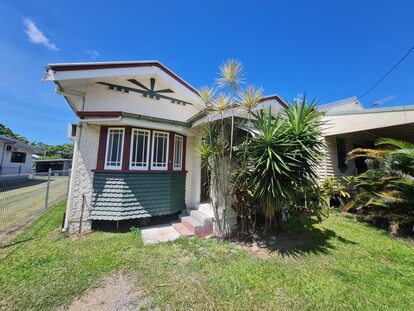Costs out of kilter in defamation cases
CRISPIN HULL COLUMN

According to a couple of informed legal sources, it costs about $100,000 a day for a Supreme Court civil hearing, including all the work needed in the lead up to a trial.
It varies a bit from state to state and the complexity of the trial, but it is a good starting point.
Last week, after a five-week trial, former Liberal Senator Linda Reynolds said she had been totally vindicated by her almost totally successful defamation action against her former staffer Brittany Higgins. But questioned why it took so long and cost so much. She has a point.
Reynolds was awarded $341,000 plus costs for all but the small part of her claim that was not successful.
The legal costs for the trial are going to amount to about $2.5 million. It could well mean that Reynolds’s costs for the small unsuccessful part of her action will eclipse the $341,000 she was awarded, leaving her empty-handed.
Higgins, meanwhile, might well find it so difficult to meet the costs order that she faces bankruptcy.
All this over two tweets and an Instagram posting.
The problem of high legal costs was also illustrated by the case of Victorian Liberal MP Moira Deeming suing former Victorian Liberal leader John Pesutto over his assertion that she associated with Nazis. Deeming was awarded $300,000. Pesutto was ordered to pay $2.3 million in costs and faced bankruptcy until crowd funding and friends bailed him out.
The costs are hopelessly out of kilter with the issue at stake. There should be a cheaper and easier way of dealing with these cases.
The Reynolds case also illustrates an emerging problem with social media. These are big damages and high costs for little tweets. Individual publishers are now being treated like major media publishers. But they rarely have the pre-publication advice of lawyers who can recraft the words to make it harder for plaintiffs.
Individuals on social media tend to blurt ill-considered things out in haste. Moreover, they have little control over the number of their followers or over re-tweeting.
In the Reynolds case, the offending tweet was read by 419,000 people. That is similar to the coverage of a major news masthead or broadcaster’s audience.
In Australia, defamation damages are capped at $459,000, so Reynolds got an award on the upper end of this. Yet there are probably far worse defamatory imputations than were the subject of this case.
It is almost as if the judge were compensating for the massive legal costs that visit even successful litigants.
Interestingly, the judge appeared to make no allowance for the difference between an individual publisher and their audience, on one hand, and a major media publisher and their audience on the other.
A media publisher extolls the virtue of their veracity and care they take over articles they publish. Their audience is made up of people who trust the publication and often pay for it with subscriptions.
Tweeting is quite different. Followers are usually just a cheer squad, not discerning persuadable people.
Does anyone outside those invested in the case really care what Brittany Higgins writes on a tweet? Or take the slightest bit of notice if they came across it?
Reynolds is correct in her assertion that vindication costs too much. Perhaps with the explosion of self-publication through social media we need a separate informal tribunal with a lower cost regime and the power to issue corrective statements, rather than the Rolls Royce system we have.
That system excludes many from taking legal action, on one hand, and, on the other hand, acts as a force to coerce people into giving in for fear that the costs will bankrupt them.
Justice over-priced is justice denied.
Meanwhile, in the land of the media, the pendulum appears to be slowing swinging towards the media after decades of judicial propensity to side with plaintiffs.
Last month, the first significant case involving the new public-interest test in defamation resulted in a media win.
Dr Munjed Al Muderis sued over a series of meticulously researched articles in The Sydney Morning Herald and The Age. Justice Wendy Abrahams found that he had engaged in unethical conduct, prioritised money, fame, reputation and numbers over his patients, provided negligent post-operative care, used improper sales tactics and misled his patients.
The important point was that the old defence of truth (which is often very hard to prove) has been augmented by a public-interest defence, under which the publisher has to prove that, based on reasonable grounds, they honestly believed what was published and honestly believed it was in the public interest to do so.
It is a less severe test than proof of truth. It is more like a professional negligence test: if a publisher behaves reasonably and not negligently, they will not be liable.
Aside from the welcome change in the law. This case and others show a changing judicial culture. It has moved from a premise that journalists sensationalise and pander to prurient interests and their proprietors are only interested in profits and only the proper authorities should investigate malfeasance.
Now, there seems to be a recognition that proper authorities often let society down and that organisations and people in high places often behave badly. The Lehrmann and Roberts-Smith cases illustrate this.
Time and time again, it is only the media that exposes malfeasance – from sexual abuse by the clergy to banking rip-offs and medical-horror stories.
Perhaps the sight last month of former NSW Minister Eddie Obeid skulking out of jail after serving time for the very offences for which he had earlier collected large defamation damages serves a salutary lesson here. He was exposed by the good investigative journalism of Kate Clymont.
Nonetheless, the huge legal bills continue to have a chilling effect on investigative journalism to the detriment of the public good. Maybe we need to cap legal costs (as in some NSW personal-injury and succession cases) and lower the cap on damages in defamation case.
This article first appeared in The Canberra Times and other Australian media on 2 September 2025.
*Crispin Hull is a distinguished journalist and former Editor of the Canberra Times. In semi-retirement, he and his wife live in Port Douglas, and he contributes his weekly column to Newsport pro bono.
- The opinions and views in this column are those of the author and author only and do not reflect the Newsport editor or staff.
Support public interest journalism
Help us to continue covering local stories that matter. Please consider supporting below.




















